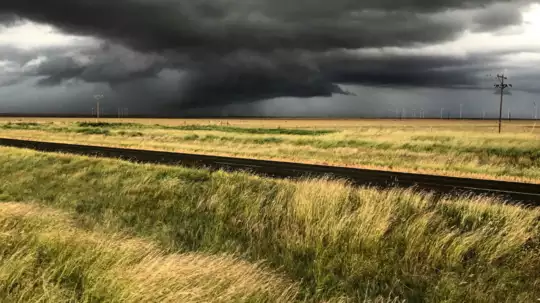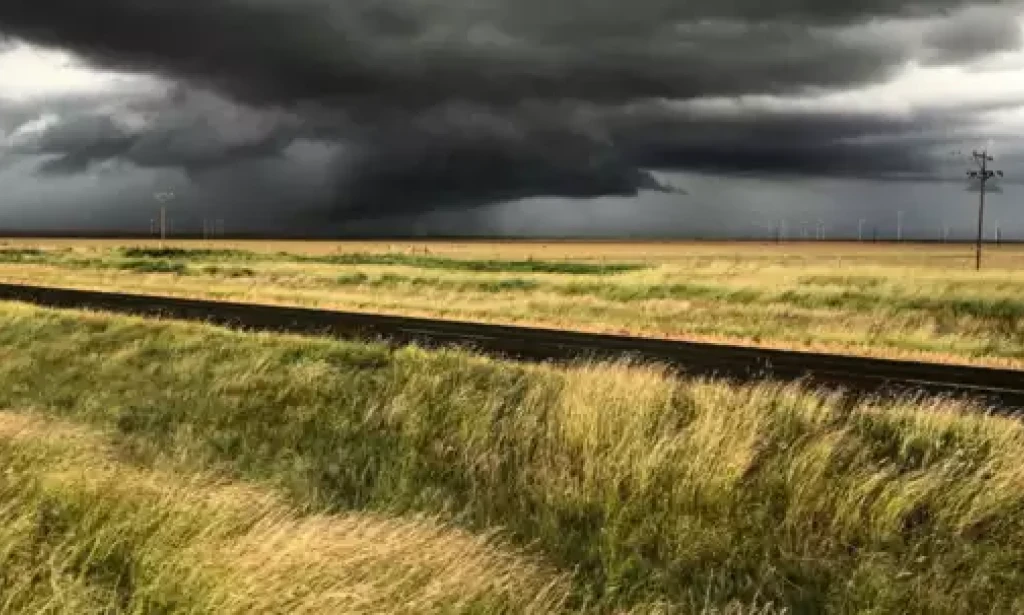Marine Tornado Warning For Lake Huron: Port Elgin And Kincardine Alerted, No Threat To Sarnia
On a summer afternoon, as the sun shines over the vast expanse of Lake Huron, residents and visitors in the scenic towns of Port Elgin and Kincardine were met with an unexpected weather alert: a marine tornado warning. This warning, issued by the National Weather Service (NWS), has set local authorities and communities on high alert, preparing for potential severe weather conditions. Interestingly, the nearby town of Sarnia has been declared outside the risk zone, providing a sense of relief for its residents.

Understanding Marine Tornadoes
Marine tornadoes, also known as waterspouts, are tornadoes that occur over water. These phenomena can be just as dangerous as their land-based counterparts, capable of causing significant damage and posing serious threats to boats, marinas, and coastal infrastructure. Waterspouts typically form in unstable atmospheric conditions, where warm, moist air rises and meets cooler air above. This interaction can create the spinning motion characteristic of tornadoes.
While often associated with tropical environments, waterspouts can and do occur in temperate zones, including the Great Lakes region. These tornadoes can vary in size and intensity, with some remaining relatively small and short-lived, while others can grow into powerful and destructive forces.
The Current Situation on Lake Huron
The recent marine tornado warning for Lake Huron was prompted by meteorological conditions favorable for waterspout development. The combination of warm lake waters and an incoming cold front created an ideal environment for these severe weather events. According to the NWS, the warning specifically targets the areas around Port Elgin and Kincardine due to observed atmospheric instability and wind patterns that indicate a higher likelihood of waterspout formation.
Residents in these areas have been advised to stay informed and take precautionary measures. Boaters are particularly at risk, as waterspouts can form quickly and with little warning. The NWS has recommended that all vessels remain docked until the warning is lifted and to avoid open waters during this period.
Port Elgin and Kincardine: Preparing for the Worst
Port Elgin and Kincardine, known for their beautiful waterfronts and vibrant communities, are now facing the challenge of preparing for potential marine tornadoes. Local authorities have activated emergency protocols to ensure the safety of residents and visitors. Emergency shelters have been identified, and local radio and communication channels are being used to disseminate updates and safety information.
Safety Measures and Recommendations
For those in the warning area, several key safety measures are advised:
-
Stay Informed: Regularly check weather updates from reliable sources such as the National Weather Service and local news outlets. Mobile weather apps can also provide real-time alerts.
-
Secure Loose Items: Any loose items near the shore or on boats should be secured or brought indoors to prevent them from becoming dangerous projectiles.
-
Avoid Water Activities: Refrain from swimming, boating, or any other water activities until the warning is lifted. Waterspouts can form rapidly, leaving little time to reach safety.
-
Seek Shelter: If a waterspout is sighted, immediately seek shelter in a sturdy building away from windows. If you are on a boat, try to navigate to the nearest shore and find a safe structure.
-
Emergency Kit: Have an emergency kit ready, including essential items such as water, non-perishable food, flashlight, batteries, first aid supplies, and necessary medications.
The Science Behind Waterspouts
Waterspouts are fascinating meteorological phenomena that can be divided into two main types: fair-weather waterspouts and tornadic waterspouts.
-
Fair-Weather Waterspouts: These usually develop along the dark, flat base of a line of developing cumulus clouds. They are generally not associated with thunderstorms and tend to be less intense. Fair-weather waterspouts form in light wind conditions and are typically weaker, posing less of a threat to land areas.
-
Tornadic Waterspouts: These are essentially tornadoes that form over water or move from land to water. They are associated with severe thunderstorms and exhibit the same intensity and potential for destruction as land-based tornadoes. These waterspouts can produce high winds, heavy rain, hail, and dangerous lightning.
In both cases, the development of waterspouts involves a complex interaction of atmospheric conditions, including temperature, humidity, and wind shear.
Historical Context and Frequency
The Great Lakes region, including Lake Huron, has experienced waterspouts in the past. While not as frequent as in tropical regions, these events are not uncommon, especially during the late summer and early autumn months when the lake waters are warm and can support the necessary atmospheric conditions for waterspout formation.
Historical records indicate that waterspouts in this region have varied in intensity and impact. Some have been benign, dissipating quickly without causing harm, while others have resulted in property damage and, in rare cases, injuries. The local communities have thus become adept at responding to these warnings, having learned from past experiences.
Community Response and Resilience
The issuance of a marine tornado warning has prompted a swift and coordinated response from the communities of Port Elgin and Kincardine. Local government officials, emergency services, and community organizations have mobilized to ensure public safety. Public meetings have been held to inform residents of the risks and necessary precautions, and social media platforms are being used to keep everyone updated.
Businesses, particularly those reliant on tourism and marine activities, have also taken steps to protect their properties and customers. Marina operators are securing boats and equipment, and tour operators are temporarily halting excursions.
The resilience of these communities is evident in their proactive approach to dealing with the threat. By following established emergency protocols and maintaining open lines of communication, they are effectively mitigating the potential impact of the marine tornado warning.
The Role of Modern Technology
Advancements in meteorological technology have played a crucial role in the timely issuance of the marine tornado warning. Doppler radar, satellite imagery, and advanced weather modeling systems have allowed meteorologists to detect the conditions conducive to waterspout formation with greater accuracy and lead time. This has provided communities with critical time to prepare and respond.
Furthermore, the integration of these technologies into public communication systems ensures that warnings are disseminated quickly and effectively. Mobile alerts, social media updates, and local news broadcasts are all part of a comprehensive strategy to keep the public informed and safe.
The Aftermath and Moving Forward
Once the immediate threat has passed, the focus will shift to assessing any damage and restoring normalcy. Emergency services will conduct thorough inspections of affected areas, and any necessary repairs or cleanups will be undertaken. Lessons learned from this event will be used to refine and improve future response plans.
In the longer term, continued investment in weather monitoring infrastructure and public education on severe weather preparedness will be essential. As climate change may influence the frequency and intensity of such events, building resilient communities becomes ever more important.
The marine tornado warning for Lake Huron has brought a heightened sense of vigilance to the communities of Port Elgin and Kincardine. While the immediate threat has prompted a range of precautionary measures, the absence of a threat to Sarnia offers some relief. This situation underscores the importance of preparedness, timely information dissemination, and community resilience in the face of severe weather events. As residents and authorities navigate this challenging period, their coordinated efforts will serve as a model for responding to similar threats in the future.


You must be logged in to post a comment.